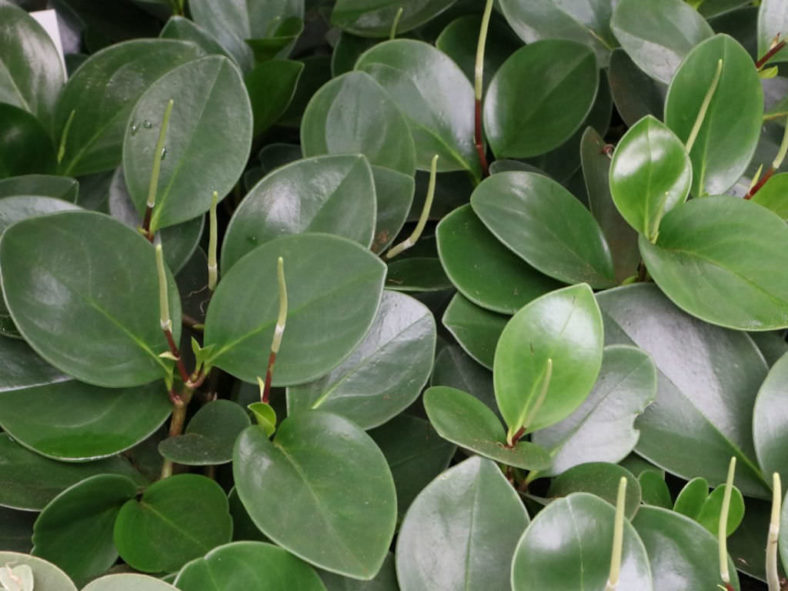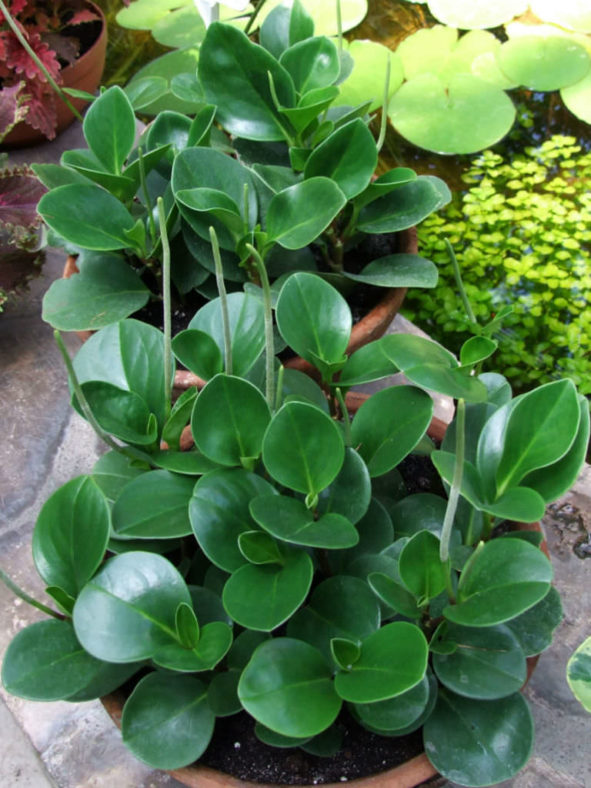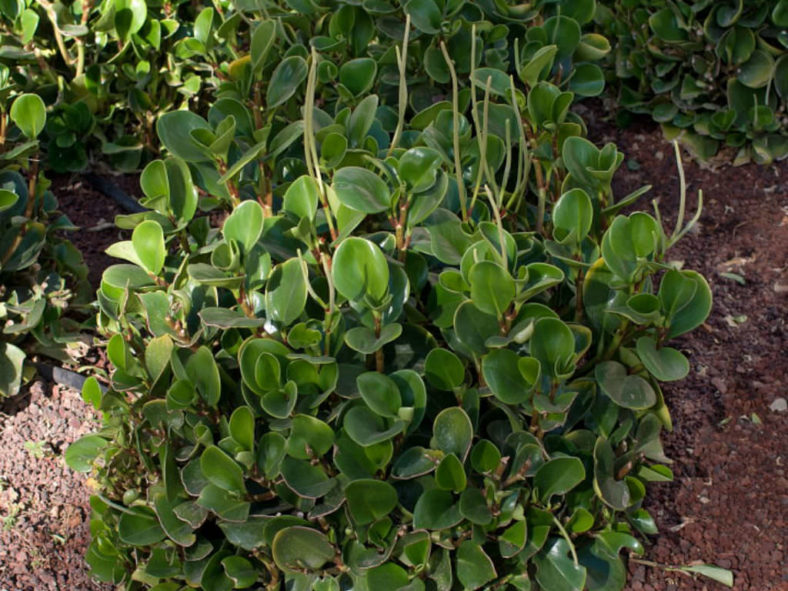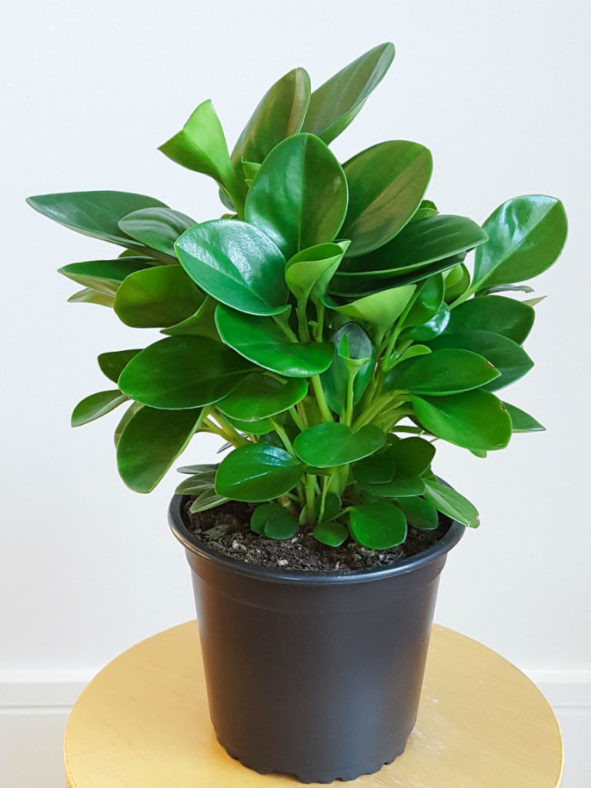Scientific Name
Peperomia obtusifolia (L.) A.Dietr.
Common Name(s)
American Rubber Plant, American Baby Rubber Plant, Baby Rubber Plant, Blunt Leaf Peperomia, Blunt-leaved Peperomia, Oval Leaf Peperomia, Pepper Face, Pepper Face Plant
Synonym(s)
Peperomia obtusifolia var. obtusifolia, Piper obtusifolium, Rhynchophorum obtusifolium
Scientific Classification
Family: Piperaceae
Genus: Peperomia
Description
Peperomia obtusifolia is a bushy plant with thick, erect stems and waxy dark green leaves. It can grow up to 12 inches (30 cm) tall. The leaves are elliptic and can reach up to 6 inches (15 cm) in length.
The flowers are interesting but not particularly showy. They are greenish-white and appear from late spring to early fall on spikes that can grow up to 5 inches (12.5 cm) long.

Hardiness
USDA hardiness zones 10a to 11b: from 30 °F (−1.1 °C) to 50 °F (+10 °C).
How to Grow and Care
Peperomias are not particularly hard plants to grow, and their small size and delicate leaves make them perfect for desktops and dish gardens. They will rarely overtake their neighbors or shade them out. In short, they are perfectly mannered and attractive little plants. The biggest problems are usually related to watering. They like steadily moist soil but can be very sensitive to overwatering. Overwatered Peperomias tend to wilt or have raised, scab-like protrusions on their leaves. Do not be alarmed if your plant loses a few bottom leaves, but a massive leaf drop is usually due to a temperature change or fertilizer problem. Lastly, Peperomias are susceptible to mealybugs, so watch for cottony white masses on the stems or undersides of leaves. These plants thrive when slightly pot-bound, so do not overpot them.
Repot plants in spring, especially to refresh the existing soil, but place them back into the same size container after root-pruning or go up only one pot size. The largest Peperomias remain relatively small and will never grow into large specimen plants. Most species can be relatively easily propagated from leaf cuttings.
Learn more at How to Grow and Care for Peperomia.
Origin
Peperomia obtusifolia is native to Florida, Mexico, and the Caribbean.
Links
- Back to genus Peperomia
- Succupedia: Browse succulents by Scientific Name, Common Name, Genus, Family, USDA Hardiness Zone, Origin, or cacti by Genus
Photo Gallery
Click on a photo to see a larger version.



